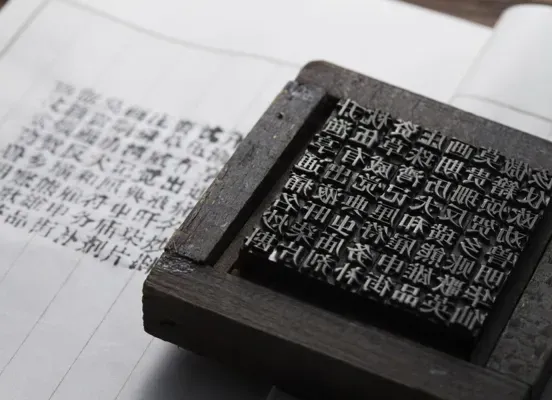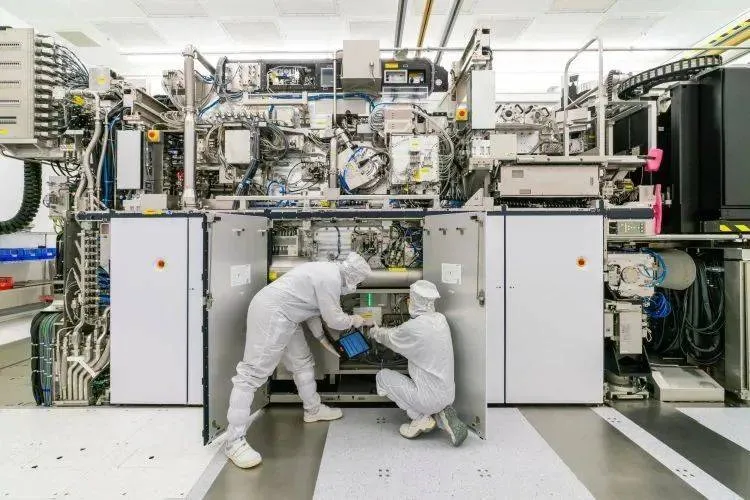Do Chinese characters just passively record Chinese? Experts from the Chinese Department of East China Normal University have different interpretations
Chinese wisdom is China’s unique and unique wisdom for thousands of years. It is the essence of Chinese culture and embodies the Chinese nation’s way of thinking, values, and humanistic spirit. Chinese characters very clearly embody the unique ideological and cultural characteristics of the Chinese nation.
Chinese civilization has outstanding continuity, innovation, unity, inclusiveness and peace. As an important part of traditional Chinese culture, Chinese characters very typically embody these characteristics. Here, the focus is on "continuity", "innovation" and "unity".
Let’s look at “continuity” first. Chinese characters are one of the oldest writing systems in the world. In 2017, Oracle Bone Inscriptions was successfully selected into the "Memory of the World Register", representing the world's recognition of the long history of Chinese characters.
Looking back at history, other ancient writings in the world, such as Egyptian holy writings, Sumerian cuneiform writings, and American Mayan writings, have all entered museums. Only China's Chinese characters, from the Shang Dynasty to the Western Zhou Dynasty, from the Spring and Autumn Period and the Warring States Period to the Qin and Han Dynasties, from the Wei and Jin Dynasties to the Sui and Tang Dynasties, from the Song, Yuan, Ming and Qing Dynasties to today, there have been oracle bone inscriptions, bronze inscriptions, Warring States characters, small seal script, official script, cursive script, regular script, running script, etc. A variety of calligraphy styles have experienced different carriers such as oracle bones, bronze, bamboo slips, paper, etc., and various writing styles have emerged in traditional and secular styles.
The history of Chinese characters has been uninterrupted, becoming the only ancient writing system that has survived to this day and is still widely used. What's even more amazing is that it has successfully entered the information age and has adapted very well to the needs of the information age, and can be freely input and used on mobile phones and computers.
The country is currently carrying out the "Chinese Character Library Project" with the purpose of "establishing a library of encodings and main fonts for all Chinese characters and ethnic minority characters", which can digitize all unearthed and handed down documents and contemporary written works in China. By then, the popularization and dissemination of Chinese civilization will be more convenient and efficient.
Let’s look at the “innovation” of Chinese characters. This can be explained from many angles. We might as well focus on the relationship between Chinese characters and Chinese language.
According to the perspective of general linguistics, language comes first, then writing. Language is primary, writing is secondary. Words are important written symbols that record language. In addition to adhering to the important mission of being the most important written symbols for recording the Chinese language, our Chinese characters have also adapted very well to and participated in promoting the evolution of the Chinese language, showing some distinctive characteristics.
For example, Chinese is a tonal language with many homophones. For example, when you hear the syllable "shǒu", you may think of different meanings such as "hand", "shou", and "head". If pinyin text is used, the ambiguity problem caused by homonym cannot be solved at all. By using Chinese characters to write or record, the meaning becomes relatively clear. Therefore, Chinese characters very conveniently eliminate the ambiguity problems caused by homophones. This is also an important reason why Chinese characters cannot embark on the path of Pinyin.
Continuing to look at this feature, we can see a very interesting phenomenon in Chinese, which is the homophonic phenomenon based on the polyphony of Chinese characters. For example, when Chinese people have a reunion dinner on New Year's Eve, they usually include fish, which is homophonic to "yu", which means having more than enough every year. During wedding ceremonies, it is popular in some places for the bride and groom to eat longan, dates and peanuts, which is homophonic to "have a child early".
In addition, puns in figures of speech, idioms in colloquial sayings, and ancient poems such as "The sun rises in the east and rains in the west, the road is sunny but sunny" are all related to this.
Therefore, Chinese characters do not just passively record Chinese, but creatively participate in the use, change and development of Chinese, which is a powerful embodiment of Chinese wisdom.
Let’s look at “unity” next. Chinese characters can transcend the limitations of region and time and become a unified cultural gene.
During the Spring and Autumn Period and the Warring States Period, there were so many vassal states with serious "character irregularities", but they all belonged to the Chinese character system. According to documentary records, since the pre-Qin period, Chinese has been divided into complex dialects. "The Analects of Confucius" said: "The elegant words of Zi, "Poems", "Books", and the conduct of rituals, are all elegant words." Confucius's disciples came from different vassal states, so he said "elegant words" when he lectured. No matter how complex the dialect is, it can all be recorded using Chinese characters.
As far as the "unity" of Chinese characters is concerned, it also includes another layer of meaning, which is the standardization of Chinese characters.
After Qin Shihuang unified the six kingdoms, he promoted the "same script" and used Xiaozhuan as the standard script at that time, which initially solved the problem of "alien characters" during the Warring States Period.
Xu Shen, a master of Confucian classics in the Eastern Han Dynasty, wrote "Shuowen Jiezi" in order to solve the problem of random misinterpretation of characters at that time. The prefixes of the characters were based on Xiaozhuan. It also included Chongwen, ancient prose, Zhouwen, etc., which played an important role in the standardization of Chinese characters at that time and later. effect.
In the early Tang Dynasty, the phenomenon of homonymous characters and different styles was more prominent. Yan Yuansun wrote "Qianlu Zi Shu", which sorted out the social words used at that time and established word usage standards, which played a positive role in social stability and cultural development.
Generally speaking, the writing in the world is developing in two directions. Some are moving towards phonetic writing, such as English and Russian; some are moving towards ideographic writing, such as Chinese characters.
Compared with phonetic characters, the biggest feature of Chinese character formation is that it must be formed according to the meaning of a corresponding word in Chinese. Therefore, the shape of Chinese characters always carries meaning information that can be analyzed. For example, in the word "plum", "木" means meaning, and "every" means sound.
In the process of historical development, Chinese characters have always stubbornly adhered to their own ideographic characteristics. For example, "zhou", the oracle bone glyph represents the land in the water, and was later extended to mean "Kyuzhou". On the basis of "zhou", people added a character "氵", and created a later Chinese character "zhou" to express the meaning of "land in the water".
The word "cannon" was originally written as "cannon", because the early use of cannon was related to stones. After the invention of gunpowder, the shape of the cannon changed. The Chinese character that records the meaning of cannon has also changed from "cannon" to "cannon".
In order to better convey meaning, Chinese characters use pictograms, referring to things, meanings, and phonetic sounds to create characters. Using these methods, the main principle of image acquisition is "appropriate objects from a distance and objects from a distance".
In daily life, "hand" is used the most, so there are many Chinese characters made with the image of "hand". The word "you" in Oracle is like a hand. The word "bing" means "knowing", "congyou" and "conghe", like holding seedlings in the hand. This should be a common scene in the Shang Dynasty society and even the entire ancient society. Cong Erhe, Congyou, holding two bunches of grain seedlings in the hand, this is the word "Jian".
Today, in basic education, we pay special attention to the difference between "that is" and "that is". If combined with the glyphs of ancient Chinese characters, the distinction between "Ji" and "Ji" will be clearer. The oracle bone character "ji" is a typical ideographic character. On the left is a food container, and on the right is a seated person. It looks like a person sitting facing the food container. The original meaning is to approach or approach. The idiom "ruojiruoru" still retains this meaning. The ancient character shape of "Ji" has a food utensil on the left and a person turning around to leave after finishing a meal on the right. It is a knowing character. Its original meaning is that the meal has been finished, which generally means that the action has been completed. The ancients used the eating scene that happened every day to express the above meaning, showing a kind of simple and wise Chinese wisdom.
It is precisely because of this characteristic of Chinese characters that the exegetical method of "seeking meaning based on form" has been formed in traditional exegesis, which has a relatively positive significance for reading ancient books and teaching classical Chinese.
"Shangshu" says: "People are not in the water prison, they should be in the people's prison." How should we understand the "prison" in it? The oracle bone glyph of "Jian" has a seated person in the lower right corner, eyes in the upper right corner, and a vessel in the lower left corner. Together, it means that the person is looking at the vessel with his eyes wide open. This is looking in the mirror in daily life, but there were no bronze mirrors at that time, and there were no mirrors today. The main thing was to look at the reflection in the water. Therefore, the original meaning of the coined word "Jian" is "to look in the mirror". Then, the meaning of the previous sentence is easy to understand: people should not regard water as a mirror, but should regard the common people as their own mirrors.
"Getting things close to you and taking things far away" is fresh and closely related to the times. Relying on the shape of Chinese characters, such freshness can be stored. People today can further explore the culture behind it by starting with the glyphs.
Mr. Chen Yinke said: "Any explanation of a word is a cultural history." Each Chinese character with a long origin is a living fossil of Chinese culture. It contains rich cultural information, involves many aspects such as food, clothing, housing, transportation, etc., and reflects the Chinese nation. psychological state, values, lifestyle, thinking characteristics, moral standards, customs, aesthetic tastes, etc.
Chinese characters are the most important written symbols for recording Chinese language. While it shines with ideographic wisdom, it also always highlights the convenience of writing. Generally speaking, Chinese characters have been developing in the direction of simplification.
For example, the word "mo" looks like the sun setting in the grass, which means "twilight". But there is another way of writing this character in Oracle, which omits the lower part. This is because oracle bone inscriptions need to be carved on tortoise shell animal bones with a knife. The texture is hard and the space is small. Some parts are often omitted without affecting the meaning.
Of course, in this process, in order to express the clear meaning, sometimes there will be a tendency to simplify. Take the word usage phenomenon of "ancient and modern characters" as an example. It specifically refers to the use of different characters to express the same meaning in different eras. The character for the era in the front is called the character ancient, and the character for the era after the character is called the character Jin. The two form the character ancient and modern. Character.
The "mo" mentioned just now is generally believed to have the original meaning of twilight or dusk, which is used as the indefinite pronoun "no one" and other meanings. Later, people created a special word "twilight" for the meaning of "twilight". In the meaning of "twilight", "mo" was originally used, and later "twilight" was used, and the two formed the "ancient and modern characters". The emergence of the word "twilight" has well differentiated the meaning. The two words "mo" and "twilight" can perform their own duties, making the recorded meaning clearer. It can be seen from this that the convenience of writing Chinese characters and the clear meaning can coexist harmoniously.
From the perspective of the requirements of Chinese character recording language, it is best to have a special Chinese character for each word meaning to record. But this will cause a problem, that is, the total number of Chinese characters will increase infinitely, affecting the convenience of cognition and writing.
Chinese characters solve this problem in a smart way, that is, by choosing a relatively simple limited character configuration as the basic ideographic unit and giving it more meaning. For example, "arrow" is given the meaning of "short", so the Chinese characters with "arrow" as the radical such as dai, 笟, and short all have the meaning of "short". This better solves the contradiction between writing and memorizing.
Xu Shen said: "Writing is the foundation of classical arts and the beginning of royal government. The predecessors are inferior to the late ones, and the descendants know the ancients." The general idea is that writing is the foundation of classical arts and the foundation of politics. The predecessors used it to pass on culture to future generations, and later generations used it to understand ancient culture.
Before the emergence of writing and documents, human society was in the age of legends. All major events that have occurred in society can only be vaguely preserved by relying on legends from generation to generation. After the creation of writing and documents, human society entered the era of trustworthy history, that is, it officially entered the era of civilization.
Thanks to the use of Chinese characters, today we have an extremely rich collection of documents passed down from generation to generation. Whether it is classics handed down from ancient times, or unearthed oracle bone documents, bronze inscriptions, bamboo slips, silk books, stele inscriptions, Dunhuang documents, etc., we can tell the history of each era from the Yin and Shang to the Ming and Qing Dynasties very calmly and clearly. This is indeed a remarkable Chinese creation and Chinese wisdom.





